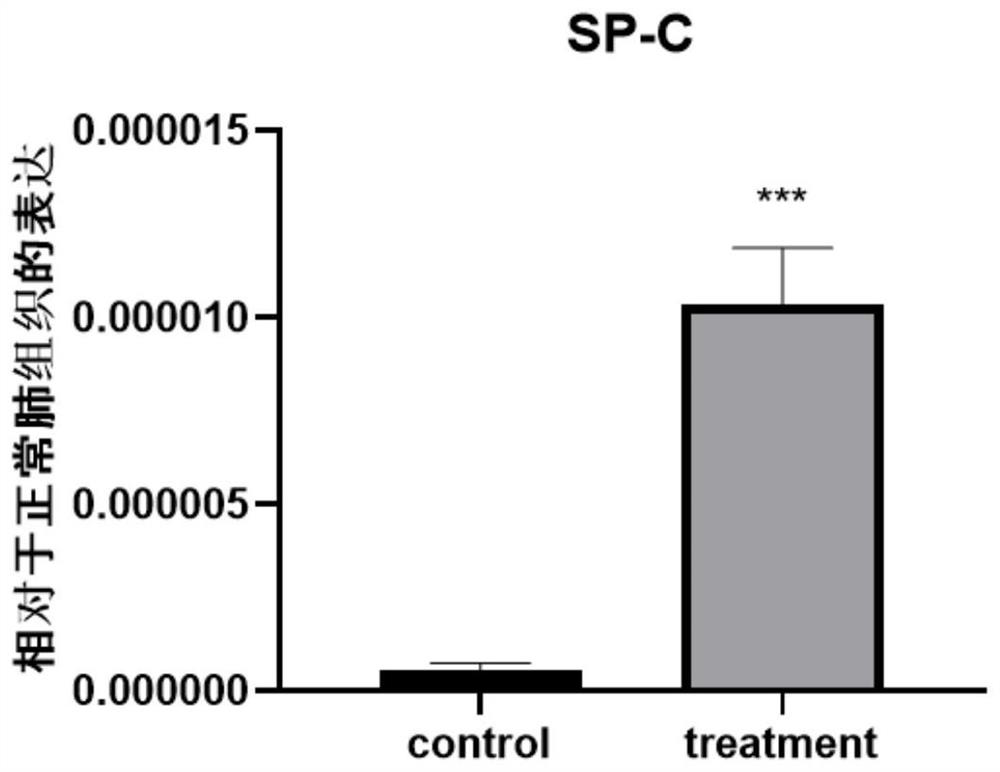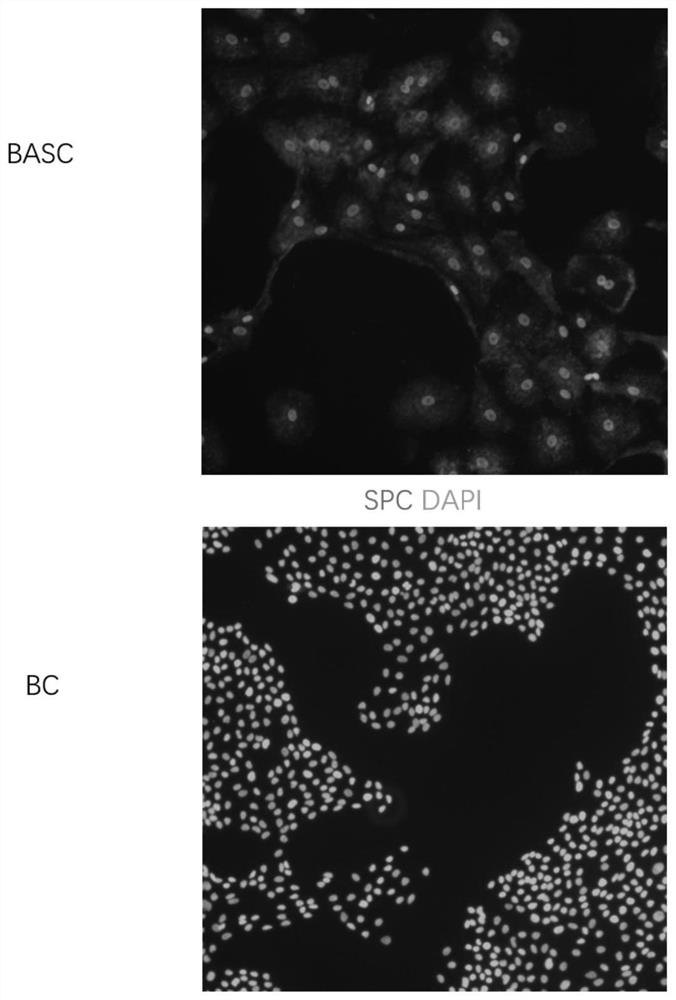Culture medium and method for inducing airway basal stem cells to differentiate into bronchoalveolar stem cells
A technology for stem cell differentiation and induction differentiation, which is applied in the field of induction medium for the differentiation of airway basal stem cells into bronchoalveolar stem cells, which can solve the problem of high induction transformation rate, and achieve the effects of high differentiation efficiency, good replacement and short time.
- Summary
- Abstract
- Description
- Claims
- Application Information
AI Technical Summary
Problems solved by technology
Method used
Image
Examples
Embodiment 1
[0034] A medium for inducing airway basal stem cells to differentiate into bronchoalveolar stem cells, comprising a primary inducing differentiation medium and a secondary inducing differentiation medium.
[0035] The primary induced differentiation medium was prepared by the following method: FGF10, KGF and CHIR99021 were added to SAGM medium (Lonza), and the mixture was uniformly mixed. In the medium, the concentration of FGF10 was 10 μg / L, the concentration of KGF was 10 μg / L, and the concentration of CHIR99021 was 3 μM.
[0036] The secondary induced differentiation medium is prepared by the following method: FGF10, KGF, CHIR99021, DAPT and IBMX are added to SAGM medium, and the mixture is uniformly mixed. In the medium, the concentration of FGF10 was 10 μg / L, the concentration of KGF was 10 μg / L, the concentration of CHIR99021 was 3 μM, the concentration of DAPT was 45 μM, and the concentration of IBMX was 90 μM.
Embodiment 2
[0038] A method for inducing airway basal stem cells to differentiate into bronchoalveolar stem cells, comprising the following steps (the steps of inducing BC to differentiate into BASC are as follows: figure 1 shown):
[0039] (1) Cell expansion: use SAGM basal medium (Lonza) to culture BC in a T25 culture flask, change the culture medium every 3 days, suck up the original medium before changing the medium, add 2 mL of DPBS to rinse for 2 minutes, and then aspirate again. Using DPBS, add 4 mL of stabilizing medium. Passage once in about 6 days. When passage, drain the medium, wash the cells twice with 2 mL of DPBS, add 2 mL of TrypLEExpress to digest for 5 min, pat and shake by hand, and observe that most of the cells float up. Add 2 mL of serum containing serum to the culture flask. The medium terminates the digestion. After the cells were pipetted several times, they were transferred to a centrifuge tube and centrifuged at 500 g for 5 min. Remove the supernatant, add 1 ...
experiment example 1
[0058] Phenotypic identification.
[0059] Immunofluorescence and q-PCR were used to detect the expression of SPC in the BASC cells induced and differentiated in Example 2. The results are as follows figure 2 and image 3 As indicated, the induction of differentiation efficiency was analyzed. image 3 The circle or ellipse with bright color in the nucleus (the original color of the picture is blue) is the staining of the nucleus by DAPI, and the irregular shape of the cytoplasmic part of the BASC with a light color (the original color of the picture is red) is the positive staining of SPC antibody.
[0060] Immunofluorescence staining and q-PCR experiments showed that the transformation rate of BC cells into BASC cells was about 95%. It can be seen that the method of using autologous BC cells to induce and differentiate BASC cells in the embodiment of the present invention has high induction efficiency and short time.
[0061] The induction results of Comparative Examples ...
PUM
 Login to View More
Login to View More Abstract
Description
Claims
Application Information
 Login to View More
Login to View More - R&D
- Intellectual Property
- Life Sciences
- Materials
- Tech Scout
- Unparalleled Data Quality
- Higher Quality Content
- 60% Fewer Hallucinations
Browse by: Latest US Patents, China's latest patents, Technical Efficacy Thesaurus, Application Domain, Technology Topic, Popular Technical Reports.
© 2025 PatSnap. All rights reserved.Legal|Privacy policy|Modern Slavery Act Transparency Statement|Sitemap|About US| Contact US: help@patsnap.com



